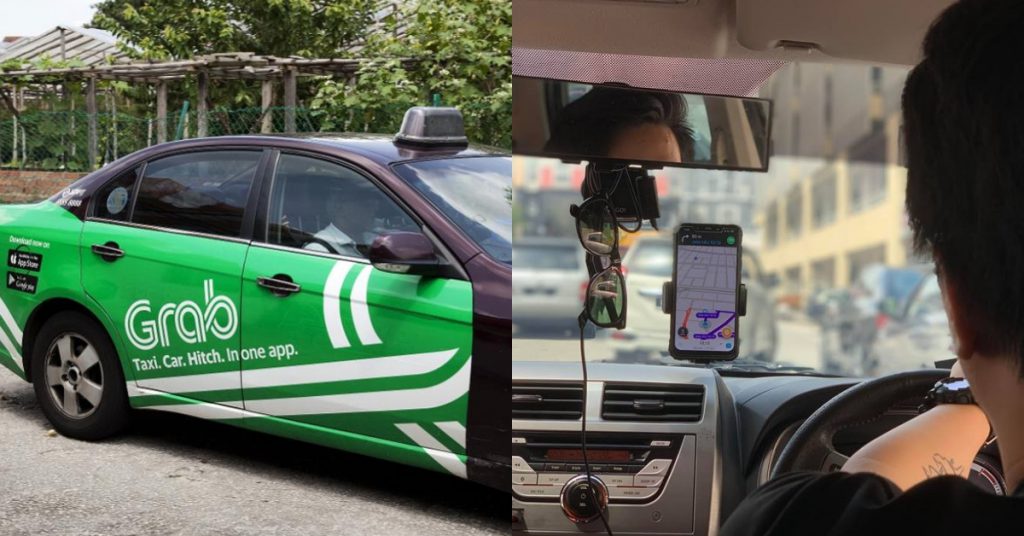- The new e-hailing regulations are set to kick in on July 12, 2019 and an estimated 200,000 e-hailing drivers nationwide will be impacted.
- Among some of the requirements, drivers have to undergo a six-hour training session at driving centres, and pay around RM800 just to obtain the license.
As the deadline for the special e-hailing licence nears, e-hailing companies are struggling to encourage their drivers to take up the PSV license as there are many drivers already hanging up their keys even before the new regulations kick in on July 12, 2019.
Just to give a little background, prior to that, the e-hailing industry has been placed under a formal regulatory framework. Amendments to the Land Public Transport (LPT) Act 2010 and Commercial Vehicles Licensing Board (CVLB) Act 1987 were passed by Parliament on the 15 August 2017.
Following that, in July 2018, Minister of Transport, YB Anthony Loke also announced that all e-hailing companies are strictly required to register with the Land Public Transport Commission (SPAD) and comply to a set of regulations.
Since April this year, drivers could start applying for the PSV license applications, but e-hailing companies such as women-only riding platform, Riding Pink has said they had received more than a dozen calls and e-mails from drivers requesting to close their accounts.
There are plenty of reasons why drivers have opted to drop out rather than take up the license. First, the estimated cost for the entire process to comply with the regulations is RM800.
Drivers also have to undergo a six-hour training session at driving centres, and pay up to RM200 for the PSV licence.
On top of that, they must get initial and annual vehicle checks at PUSPAKOM, pass criminal background and medical checks, contribute to SOCSO, purchase an e-hailing add-on car insurance, and equip their cars with safety equipment including fire extinguishers.
Wanting to get a better view of the overall situation, we asked drivers and a couple of e-hailing companies about what is really going on in the industry.
From The Drivers
As the core of the e-hailing industry, the drivers have been up in arms over the new regulations as it will cost them a lot to obtain it with an estimated cost of RM800.
One driver we spoke to mentioned that many drivers are actually part timers and treat e-hailing as a supplementary income that brings in around RM500-1,000 per month. Hence, in order to get the license, they would need to fork out a lump sum at the start, and need to go through the hassle of it.
Another driver mentioned that he himself already had a PSV license years ago. He compared e-hailing’s PSV license to a taxi’s PSV licence where most of the process is done by the taxi company whereas for e-hailing drivers they have to go through the process themselves.
Other than that, there are some drivers who are also confused with the process as there has been no clear steps to obtaining the license.
One of the confusions that a driver brought up was that many believe that they have go through the hassle again when their PSV expires and go through the same process the next year.
“What they don’t understand is that this is a one-off thing,” he said. “Once you’ve passed and gotten your PSV, the only thing you have to do are the annual medical checkup and renewal of PSV.”
Some drivers have said that e-hailing companies are trying their best to help them through this period of transition, either by listing clinics for cheaper medical checkups, locations for the classes and other advice.
Although the new regulations have brought plenty of flak, most of the drivers interviewed agreed that the way forward for e-hailing is through regulating the industry.
From The E-Hailing Companies
Seeing that drivers themselves were facing problems following the regulations, we reached out to Grab and Carriage For Her to get their views on this.

As for Carriage For Her, they’re constantly reminding their drivers regularly about signing up and recommending them where and when to take the classes. Furthermore, they foresee a 30-40% drop in drivers for the short term.
“We think the industry will take a hit in the short term,” said Carriage For Her co-founder, Nick Smith. “However, we do believe it should improve the professionalism for e-hailing so it could actually boost the industry.”
“Longer term we will need to adapt and ensure we market more widely to attract a greater number of drivers who see this as a full-time job,” he added.
He also agrees that there has been some confusion with the whole process and suggests that the list of schools to take the PSV test and places to obtain insurance could have been provided earlier.
Since the new regulations were announced, Grab has also voiced their support saying, “We want to ensure that the spirit of the regulation is upheld, and the processes or requirements set are scalable as we move towards creating an innovative regulatory framework for e-hailing.”
However, on the flip side, they have been claiming that although they are ready to comply with the new regulations, their biggest concern is the level of readiness of the relevant agencies in executing the law.
In a February 19 statement, they voiced their concerns that the processes and infrastructure necessary to ensure a seamless transition are taken too lightly.
“We believe the regulations were originally intended to enhance safety and quality. However, without a transparent and inclusive process, this can instead be distilled as measures leading to higher costs, greater friction and thus, affect service availability for all.”
– Statement from Grab
And it’s already seen as drivers don’t even know where to go for classes and are unsure of how much to pay for the entire process.
Based on observations, it took the agencies involved 9 months to actually come up with the training module as it was only ready on April 1st.
Furthermore, not all the centres were prepared and after calling some of them, they said that they only held one class per week, with some even saying classes were only held once a month.
At this rate, the 200,000 local e-hailing drivers would face trouble getting into classes as there won’t be sufficient classes.
An observation from various comments suggests, that everyone is trying hard to move towards the deadline, whoever can get to it—great, but the enforcement agencies should give a grace period for those who can’t as guidelines and processes are only being revealed now.
Updates on July 11, 2019:
In May 2019, the government gave the approval for e-hailing operators to develop and run e-PSV training to expedite the application process. According to a media statement from Grab, the ease of digital training has since attracted almost 20% of their active driver-partners to complete their e-PSV training within just four weeks.
Grab has also subsidised 70% of total driver regulatory compliance cost.
On July 8, Grab reported that only 10% of their active driver-partners have successfully obtained their PSV licence. Based on feedback from many of their part-timers, the limited timeframe and the difficulty in navigating the different authorities were the main concerns.
“Each day, our active driver-partners in full force serve 1 million ride bookings. On average, a passenger can get his or her ride within 6 minutes. Unfortunately, this may change post-12 July,” Grab said.
MyCar, the second largest ride-hailing app in Malaysia after Grab has also predicted a 50% decrease of its current drivers.
On a slightly more positive front, on the first of July, a mass exam for disabled (OKU) drivers organised by Ministry of Transport. On the 9th, 209 out 245 OKU applicants passed their exams and received their PSV license.
But for passengers and users, there are a few more predictions floating around the industry about July 12 which include:
- Possible higher fares
- Longer waiting times
- Not even being able to get a ride, especially during peak hours
Grab Drivers Malaysia Association president Arif Asyraf Ali went as far as to predict a “Carmageddon”, with a standstill situation for the e-hailing industry.
The recommendation? If you’re booking a ride on July 12 and after, make sure that you have a lot more time allotted for your travels, and probably be prepared to fork out a little more.
- If you would like to find out more, you can check out our previous article where we talked to drivers about the new regulations.













